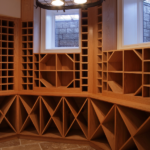Choosing the perfect flooring material for your home is a crucial decision that significantly impacts both the aesthetics and functionality of your living space. The sheer variety of options available in the market can be overwhelming, making it essential to consider factors such as durability, style, and maintenance requirements. In this guide, we will delve into the intricacies of selecting the ideal flooring material, exploring some key aspects—lifestyle compatibility, design harmony, and budget considerations—to help you make an informed decision that suits your unique preferences and requirements.

Tailoring Your Floors to Daily Demands
When it comes to choosing the perfect flooring for your home, one of the primary considerations should be how well the material aligns with your lifestyle. Different areas of the house experience varying levels of foot traffic, moisture exposure, and overall wear and tear. For high-traffic zones such as the living room or kitchen, durable options like hardwood, laminate, or ceramic tile may be more suitable. These materials not only resist scratches and stains but also offer easy maintenance.
Conversely, for areas prone to moisture, such as bathrooms or basements, waterproof flooring options like vinyl or porcelain tiles prove to be more resilient against water damage. By aligning your flooring choice with the demands of your lifestyle, you can ensure longevity and practicality in every corner of your home.
Elevating Aesthetics Through Flooring Selection
Your home’s flooring serves as the canvas upon which your entire interior design scheme unfolds. Therefore, it is essential to choose a flooring material that not only complements your style but also harmonizes with the overall design of your home. For a timeless and classic look, hardwood floors offer warmth and elegance, seamlessly blending with a variety of design aesthetics.
On the other hand, if you prefer a more modern and versatile option, consider the wide range of colors and patterns available in vinyl or laminate flooring. Each material has its unique charm, and it’s crucial to envision how the flooring will interact with your furniture, wall colors, and decor elements. Striking the right balance between aesthetics and functionality ensures that your flooring not only enhances the beauty of your home but also stands the test of time.

Balancing Quality and Cost Efficiency
While the allure of premium flooring options is undeniable, it’s essential to strike a balance between quality and budget constraints. Assessing the long-term costs, including maintenance and potential replacements, is crucial in making an informed decision. Hardwood floors, for instance, are a timeless investment that can increase the value of your home, but they come with a higher upfront cost. On the other hand, laminate and vinyl flooring provide cost-effective alternatives that mimic the appearance of more expensive materials.
Consider the overall financial implications, including installation costs and ongoing maintenance, to determine the most budget-friendly yet durable option for your home. By weighing the upfront expenses against long-term benefits, you can make a flooring choice that aligns with your financial goals without compromising on quality.
Versatility in Tile Selection
When seeking a flooring material that seamlessly integrates with diverse design schemes while providing durability, tiles emerge as a versatile and practical option. Tiles come in a plethora of materials, including ceramic, porcelain, and natural stone, allowing homeowners to choose the perfect tiles for any project imaginable. Whether you’re aiming for a sleek, modern kitchen or a timeless bathroom, tiles offer a wide range of styles, colors, and patterns to suit your aesthetic preferences.
Additionally, their resistance to moisture and easy maintenance make them suitable for high-traffic areas. The durability and design flexibility of tiles makes them a valuable addition to any home, ensuring that your flooring not only meets your current needs but also adapts to future design changes or renovations. Consider incorporating tiles into your flooring decision-making process for a timeless and adaptable solution that seamlessly connects with the lifestyle, design, and budget considerations discussed earlier.
Related Posts
Environmental Impact
As sustainability becomes an increasingly important consideration in home design, exploring eco-friendly flooring options is essential. Some flooring materials, such as bamboo and cork, are renewable resources that grow rapidly, making them environmentally conscious choices. Additionally, recycled materials in carpets and reclaimed wood in hardwood flooring contribute to minimizing the environmental impact.
When selecting flooring with sustainability in mind, you not only reduce your carbon footprint but also contribute to the overall well-being of the planet. Understanding the lifecycle and sourcing of different flooring materials allows you to make a choice that aligns with your commitment to environmental responsibility.

Enhancing the Livability of Your Home
Beyond aesthetic and durability considerations, the comfort and acoustics of your flooring significantly impact the overall livability of your home. Carpeted floors, for example, provide a soft and warm surface underfoot, making them ideal for bedrooms and living areas. In contrast, hard surfaces like hardwood and tile may enhance acoustics, reducing noise in high-traffic areas. Area rugs can be strategically placed to add comfort and absorb sound as needed. By taking into account the specific comfort and acoustical requirements of each room, you can create a living space that not only looks good but feels good too.
In the quest to choose the perfect flooring for your home, understanding the intricate balance between lifestyle, design, budget, versatility, sustainability, and comfort is paramount. Each factor plays a crucial role in shaping the ambiance and functionality of your living space. Whether you opt for the timeless elegance of hardwood, the versatility of tiles, or the eco-friendly appeal of bamboo, the key is to align your choice with your unique preferences and the specific demands of each room. By carefully considering these aspects, you can craft a living space that not only reflects your style but also enhances the overall quality of your home. Remember, the perfect flooring is not just about aesthetics; it’s about creating a harmonious and functional environment that caters to your lifestyle and stands the test of time.





